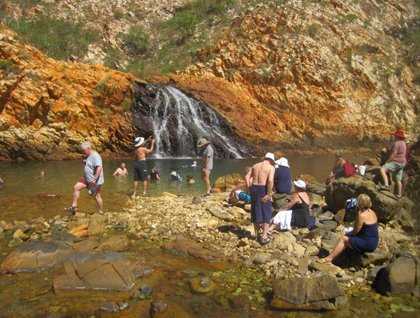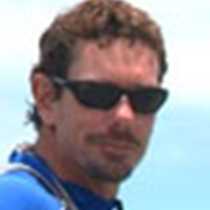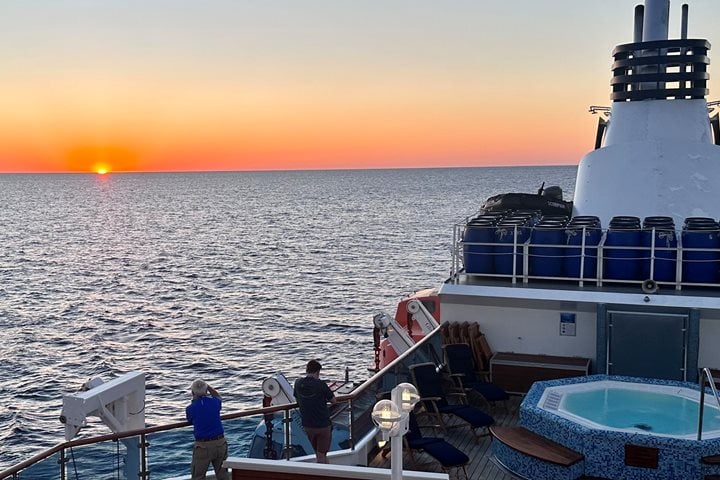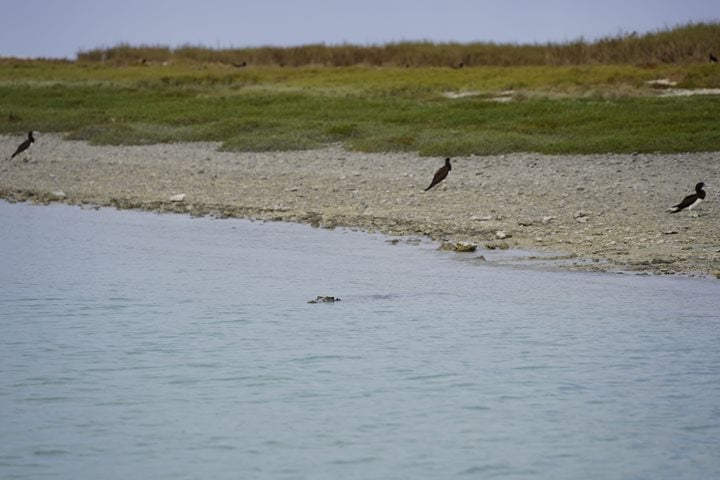We started our journey on board the National Geographic Orion with a sumptuous breakfast. The morning was quite cool and a stiff southeasterly wind greeted us to make us aware that we are indeed on a ship. This morning we were quite excited as we met in the main lounge to learn of the new adventures awaiting us.
National Geographic Orion anchored in Yampi Sound, amid the islands of the Buccaneer Archipelago. Two islands, Cockatoo and Koolan, have substantial iron mines, extracting rich ore. Evidence of the iron is readily evident when looking at the ancient sandstone, much of which has a patina of rust. Laid down as a series of sedimentary deposits, the sandstone is sometimes replaced by a layer of much softer, gray siltstone. This entire rock formation has been bent and buckled over great spans of time, forming synclines and anticlines. Much of the rock has been turned on its side, and stands vertically.
Our first taste of the Kimberley had us setting out in Zodiacs, as we headed for Crocodile Creek for a swim! No, we didn’t swim with crocodiles. It is said that the rock formation as one approaches the creek looks like a crocodile. As our expedition leader Adam says, you need to drink at least four beers to see a crocodile in the rock formation. Crocodile Creek cascades into a large pool that, when above the high tide line, is cut off from the ocean and thus from crocodiles. After carefully inspecting the pool for crocodiles (none were found), we were happy to take a refreshing plunge in the cool fresh water. Adding to the fun was a great refreshment station set up by our hotel crew, we then head back to the ship for lunch and prepare for our next adventure.
Exploring by Zodiacs, we poked into inlets and scoured the shoreline for wildlife, scenic surprises, and photo opportunities. An osprey sitting on a nest was a highlight. Unlike most birds, ospreys use the same nest year after year. Their nests can become huge. Ospreys are fish eaters. Once a fish is caught, the birds carry their prey to a tree or to their nest, where they consume their meal. Ospreys have uniquely adapted feet, which are covered with sharp spicules, which help them from dropping their often slippery prey. Ospreys virtually always carry their prey head first, making for the most aerodynamic transport.
As the sun begins to set we headed back to the ship for a relaxing drink, but the day was not over yet. After a shower we put on our formal wear for our captain’s welcome cocktail party before dinner, then sat and relaxed or maybe danced as Glenn tickled the ivories to the wee hours. And that, ladies and gentlemen, was our first day aboard the National Geographic Orion.







